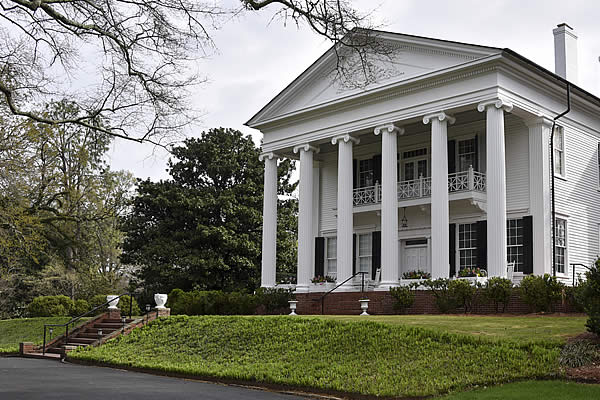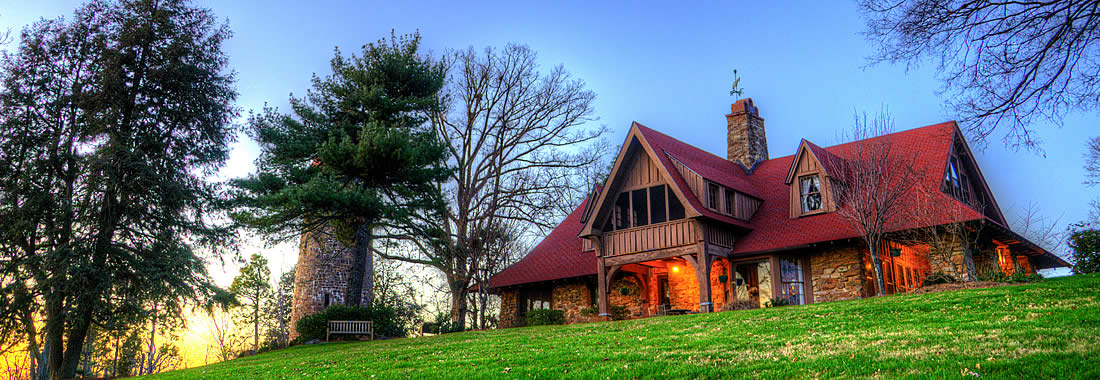Plant a Seed. Change the World.
Left Nav
The seeds of Berry College were planted in 1902
... when an urgent need for quality education met the vision, will and generosity of our legendary founder Martha Berry.
The daughter of a prosperous local business owner, Miss Berry began offering Sunday school lessons to serve nearby communities that lacked access to both church and school. Encouraged by the results of her efforts, Miss Berry decided in 1902 to devote the 83 acres she had inherited from her father to found the Boys Industrial School. Her premise was simple: In exchange for a quality education, the students would work to help run and maintain their school.
Across the years, we’ve remained true to Miss Berry’s founding values. Matters of the head, heart and hands lie at the center of our approach to intellectual development, community life and personal growth.
Students still contribute their effort and energy to help run their college. A culture of mentorship remains the essence of who we are. And we are steadfast in our commitment to partnering with students and their families to make this education—and its lifelong value—possible.
A BRIEF HISTORY OF BERRY
- 1902 – Founding of Boys Industrial School
- 1909 – Addition of Martha Berry School for Girls
- 1914 - Implementation of “work” as an integral component of the Berry education. By contributing to the running of their college, students helped keep operating costs low.
- 1926 – The school became a junior college and soon after a senior college.
- 1930 – Miss Berry gained national renown for her educational efforts including being named by Good Housekeeping magazine as one of the nation's 12 most influential women.
- 1930's – The College footprint grew to 30,000 acres, an expansion made possible through Miss Berry’s relentless fundraising efforts, which included a landmark gift from Henry and Clara Ford to fund the construction of Berry’s iconic Ford Complex.
- 1932 – Berry College graduated its first class.
- 1956 – The College began a robust development of its liberal arts and professional program offerings, led by President John R. Bertrand.
- 1957 – Berry was accredited by the Southern Association of Colleges and Secondary Schools. Admission efforts were expanded to include urban areas, non-traditional students and commuters.
- 1960's/70's – Berry enacted a series of cultural reforms, that included paying student workers instead of crediting accounts, ending mandatory religious services and conducting national searches for faculty members.
- 2002-2006 – Berry created a state-of-the-art science center (now called McAllister Hall), restored the historic Ford Complex (with a new alumni center) and renovated the Cook Building as a teacher education facility.
- July 2006 – Stephen R. Briggs became Berry's eighth president.
- 2008 – The 131,000-square-foot Steven J. Cage Athletic and Recreation Center opened, providing a stunning and state-of-the-art home for intercollegiate athletics and establishing a new focal point for campus life.
- Berry joined the Annapolis Group, a prestigious organization of leading national independent liberal arts colleges.
- The institution began its transition to NCAA Division III, eventually becoming a founding member of the Southern Athletic Association, a conference made up of academically selective residential liberal arts colleges throughout the region.
- Berry created the Gate of Opportunity Scholarship to provide motivated students who possess a strong work ethic the opportunity to experience the Berry education and graduate debt-free.
- 2014-present – Berry continues to grow Gate of Opportunity Scholarship, has established academic centers for integrity in leadership and entrepreneurship and has dramatically enhanced campus offerings by building/renovating a variety of new facilities, including:
-
Valhalla Stadium, Williams Field and Clark Track & Dickey Field (2015)
-
Rome Tennis Center at Berry College, the nation’s largest hard court facility and home to Vikings Tennis (2016)
-
Sisters Theatre, a 9,226 square-foot addition to Blackstone Hall that includes a black-box stage (2017)
-
The Christopher Browning Pavilion at Oak Hill 5,760-square-foot event facility (2018)
-
The Betty Anne Rouse Bell Recital Hall at historic Ford Auditorium (2020)
-
The Fairfield Inn & Suites by Marriott hotel adjacent to the Rome Tennis Center at Berry College (2021)
-
The 23,000-square-foot Animal Science Building which houses the college’s largest and most distinctive major. The $15.7 million building is connected to the School of Mathematical and Natural Sciences (2021)
- The Oak Hill Residences, adjacent to the grounds of Oak Hill & the Martha Berry Museum, are the most recent student housing addition and the first off-campus facility complete with resident assistants and staff members on site (2021)
-




